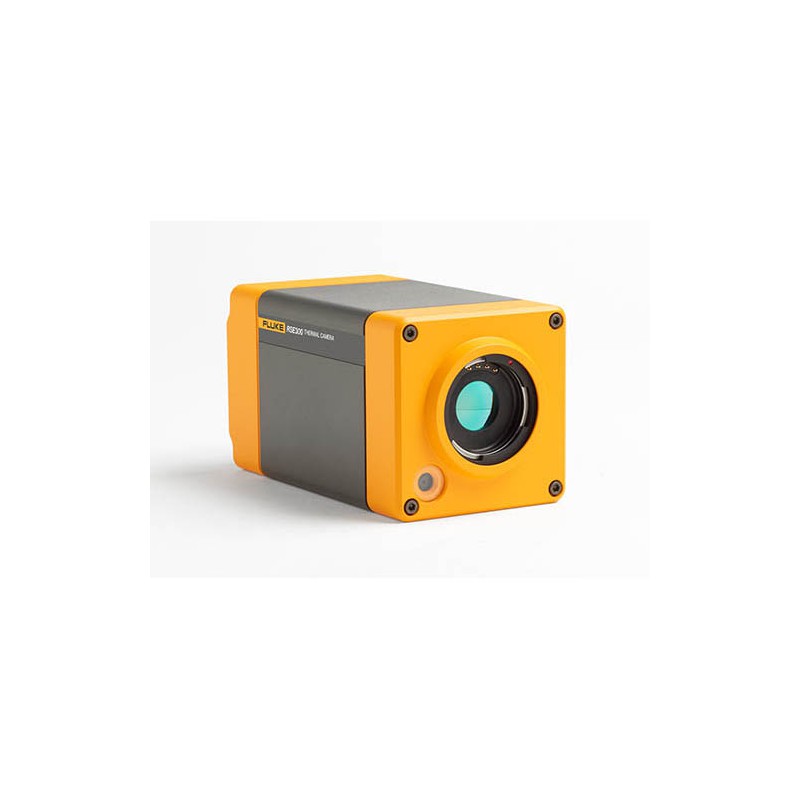
Reference: FL46492991F7
Brand: Fluke
Fluke 700HPP
High-Pressure Pneumatic Test Pump with BSP Fittings









60 Hz, 320 x 240, 1.85 mRad Mounted Infrared Camera for Research, Science and Engineering (RSE)
The Fluke RSE300 60 Hz, 320 x 240, 1.85 mRad Mounted Infrared Camera for Research, Science and Engineering (RSE) is a fully-radiometric, stationary infrared camera. Building on 65 years of manufacturing the world's top measurement tools, these cameras offer powerful analytical capabilities through SmartView desktop software and plug-ins to MATLAB and LabVIEW. Users can now stream and analyze infrared data from their workstations with more confidence and faster results with both ruggedness and ease-of-use.
Designed for research, science and engineering, the RSE300 60 Hz offers the image quality and data analysis capabilities to enhance quality assurance, testing and product development functions.
Infrared images alone can be difficult to understand, which is why Fluke pioneered IR-Fusion technology. Automatically capture a visible image with every infrared image; this allows you to always know exactly what you are looking at. And image quality is everything when it comes to quickly analyzing infrared images - you need the right level of detail to pinpoint specific areas of concern. IR-Fusion blends visible light and infrared images to capture a clear 5MP real-world picture of your target. Blend at different preset levels and add picture-in-picture (PIP) to capture an incredibly revealing hybrid image.
• Powerful, modular suite of software tools for viewing, annotating, editing and analyzing infrared images
• Generate fully customizable and professional-looking reports in a few easy steps
• Full support of IR-Fusion Technology lets you edit images in five viewing modes
• Easy to use, yet delivers high-end analysis performance
• Display array of open images for convenient selection and analysis
• Scroll across images to display temperature at any given point
• Edit color palettes, reference images, markers and emissivity
• Organize data with extensive annotations
• Add annotations (text comments) to images and reports
• Input information such as locations, category and other notes
• Referenced images can be linked for good/bad and before/after analysis
• Alter level, span and palette selection to enhance contrast or display detail more effectively
• Unlimited standard and user-defined analysis markers
• Five viewing modes allows you to choose best images
• Generate professional, customized reports fast
• One-click standardized report generation for quick results
• Choice of features including before/after, IR plus visible light, annotations, supporting data, graphics and charts
• Report wizard guides user through report generation
Fluke Connect: See it. Save it. Share it. All the facts, Right in the Field
Fluke Connect with ShareLive video call lets you stay in contact with your entire team without leaving the field. The Fluke Connect mobile app is available for Android and iOS and works with over 20 different Fluke products. Make the best decisions faster than ever before by viewing all temperature, mechanical, electrical and vibration measurements for each equipment asset in one place. Get started saving time and money by increasing your productivity.
Reference: FL46492991F7
Brand: Fluke
High-Pressure Pneumatic Test Pump with BSP Fittings
Reference: EX54832532E3
Brand: Extech
True-RMS AC/DC Mini Clamp Meter, 400VAC/DC, 400AAC/DC with NIST Calibration
Reference: HI84991801HM
Brand: Hioki
16-channel Fully Isolated Memory HiCorder, 20MS/s with 64MW Memory, Main Unit Only
Reference: PR06154428PO
Brand: Promax
200 MHz, 2 + 1 External Channels, 2 GS/s Digital Storage Oscilloscope with Touch Screen
Reference: RI19256316RS
Brand: RIDGID
Pipe and Cable Line Transmitter, 10 Watts
Reference: AM07284347AU
Brand: Amprobe
Ultrasonic Leak Detector Receiver Only, No Accessories

60 Hz, 320 x 240, 1.85 mRad Mounted Infrared Camera for Research, Science and Engineering (RSE)